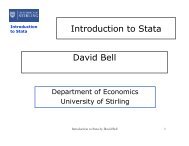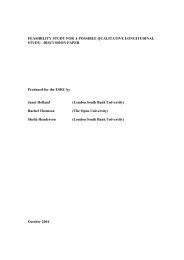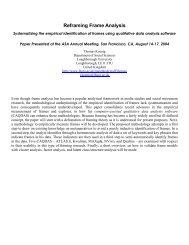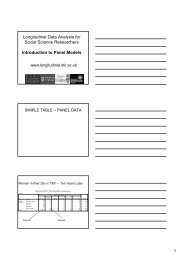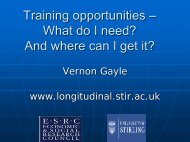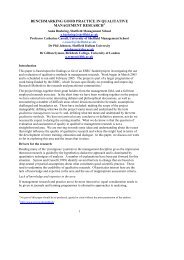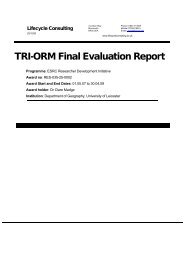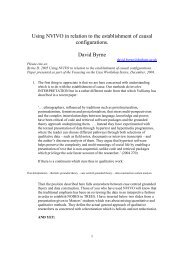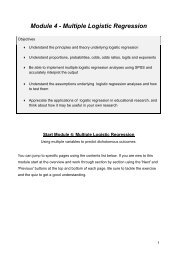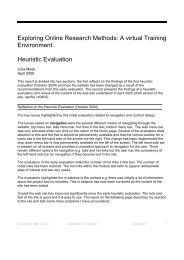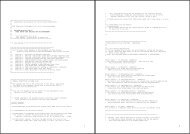Create successful ePaper yourself
Turn your PDF publications into a flip-book with our unique Google optimized e-Paper software.
Anti-Semitism as Free Speech: A Case Study<br />
This paper presents on the case of a recent debate about anti-Semitism in Germany, a novel<br />
and systematic methodology to identify frames and validate, compare, or falsify different<br />
framing models.<br />
After a delineation of the theoretical approach to framing theory, the focus of the paper<br />
will be on the methodological identification of frames. Initially, frames were interpretatively<br />
identified in a small number of texts with three pervasive metanarratives ("liberal<br />
individualism," "ethno-nationalism," and "harmony with nature") in mind. Keywords that<br />
flagged frames in the texts were then distilled. These keywords were subsequently used to<br />
code further texts using auto coding procedures from computer-aided qualitative data analysis<br />
software (CAQDAS). In a final step the identified frames were validated using latent class<br />
analysis.<br />
Framing Theory<br />
Frame analysis is en vogue (Meyer 1999: 85; Reese 2001: 7; Benford and Snow 2000: 611f),<br />
although it was initially predicted to become a niche method at best. One Contemporary<br />
Sociology reviewer complained that Frame Analysis is cumbersome to read (Davis 1975:<br />
603), the other one wondered, if an adequate systematization of frame analysis would be<br />
feasible (Gamson 1975: 605).<br />
Probably the single most important factor for the success of Goffman's frame analysis is<br />
therefore its unorthodox application. Frame analysis is no longer Goffman's frame analysis,<br />
but is frequently only loosely connected to the original formulation. Notwithstanding the<br />
recurrent symbolic nods to Goffman, today's "frame analysis" spans a number of disparate<br />
approaches (D'Angelo 2002; Fisher 1997; Maher 2001: 81f; Scheufele 1999: 103, 118), some<br />
of which are even incompatible with each other (Scheufele 1999: 118), While not excluding<br />
the possibility of fruitful interaction between the heterogeneous frame analyses (D'Angelo<br />
2002: 883), conceptual parsimony necessitates the clarification of the framing concept for<br />
present purposes.<br />
This is not the place to overview the wide range of approaches that have been subsumed<br />
under the heading of frame analysis, a task that others (Benford and Snow 2000; D'Angelo<br />
2002; Scheufele 1999) have already accomplished. Instead, I would like to merge at this<br />
1



